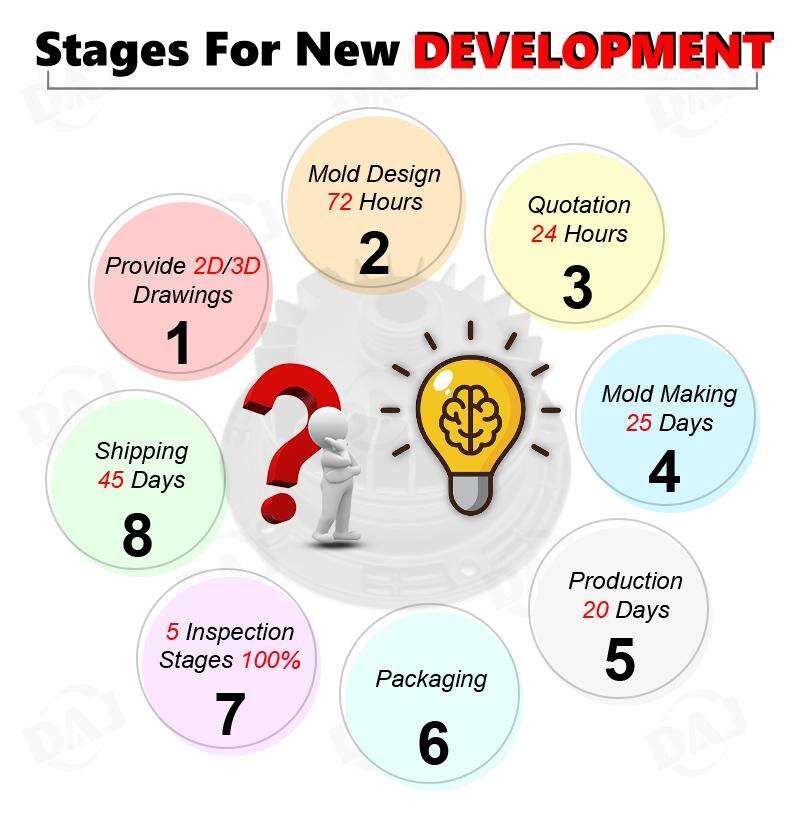Einführung
Sterben Besetzung ist ein Fertigungsprozess, der eine Hochvolumenproduktion nutzt, um Präzisionsteile durch das Einspritzen von geschmolzenem Metall in wiederverwendbare Metallformen herzustellen. Obwohl effizient und flexibel, Druckguss ist nicht ohne seine Probleme. Die Präzision der Teile kann durch solche Vorkommnisse ruiniert werden. Dieser Artikel wird die häufigsten Mängel beim Druckguss, deren Ursachen und Gegenmaßnahmen untersuchen.
Arten häufiger Mängel beim Druckguss
Die Klassifizierung könnte grob in folgende Kategorien unterteilt werden:
Porosität und Schrumpfung: Defekte, die durch die Kombination von Gas, das während der Verfestigung, des Materialschrumpfens und der Kontraktion in geschmolzenem Metall eingeschlossen ist, entstehen.
Kalte Verschlüsse und Mikrometer : Dies geschieht, wenn nicht genug Metall zur Füllung der Form vorhanden ist. Das Metall fließt auch nicht gleichmäßig durch den Boden des Setbereichs.
Verformung und Verzerrung: Diese Wirkung entsteht durch unregelmäßige Abkühlung oder Restbelastungen.
Einschlüsse und Verunreinigungen: Diese entstehen durch Metalle, Fremdstoffe und andere unerwünschte Gegenstände, die sich im geschmolzenen Metall festhalten könnten.
Oberflächenfehler: Rauheit und Schälen sowie andere Oberflächenfehler des Teils.
Verhinderung von Porosität und Schrumpfung
Es gibt zwei Hauptursachen für Porosität in beheizten Formen: Fehlende Gasaustrittskanäle im Druckgussteil, um Flüssigkeiten oder Gasen mit mehr als ein paar Molekülen das Entweichen aus heißen Stellen zu ermöglichen (wobei Gase aus den Luftkammern im Inneren wieder in das Metall eindringen und nicht wie gewünscht abfließen können), wie es bei der herkömmlichen Konstruktion von Angusssystemen der Fall sein kann, oder wenn sich auf der Oberfläche eines Rohlings zu viele Lufteinschlüsse befinden, sodass eingeschlossene Luft nicht schnell genug wiederhergestellt werden kann (und dies sogar zur Zerstörung der gesamten Metallmasse führen kann).
zur Verringerung der möglichen Porosität:
Verwenden Sie einen Ausgang für das Gas, um aus dem Formkavität des Druckgussforms zu entweichen.
Es ist einfacher, das Rohr mit flüssigem Metall zu füllen.
Einführung in die Veränderung der Injektionsbewegung
Wenn eine Maschine von dick zu dünn umgewandelt wird, muss sie sich sowohl nach oben als auch nach unten in die neue Form bewegen. Dies ermöglicht es dem Kolben, mit maximaler Geschwindigkeit weiterzumachen. Nützliche Techniken sind spezielle Läufer oder Verschleißplatten, die größere Durchflusswege
Einführung in die Einspritzbeschleunigung und Drehzahländerung
Die Beschleunigung der Einspritzung kann auch auf 20-50% erhöht werden, damit die Pumpen am Vorstromende weiterhin in größtmöglichem Umfang laufen.
Fallstudien und bewährte Verfahren
Die Ergebnisse der Studie zeigen, dass die Unternehmen in der Industrie eine Reihe von Lösungen finden, die ihnen helfen können, ihre Produktion zu verbessern.
Die Ergebnisse der Studie zeigen, dass die Produktion von Werkzeugen mit einem hohen Wert auf die Qualität und Leistung der Teile beeinflussen kann.
Die Entwicklung der Druckgussindustrie ist in der Tat eine wichtige Voraussetzung für die Entwicklung eines hohen Qualitätsstandards. Auch in einer Industrie wie dieser, die seit über 100 Jahren existiert, gibt es immer neue Richtungen und Herausforderungen.

